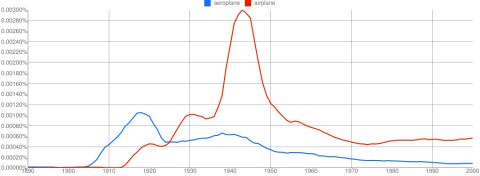Here are a couple of interesting but spurious claims about new weapons from 1939, which I’ve come across in my recent reading.
The first is from the Melbourne Argus of 19 January 1939. It’s very brief, no more than a simple statement that the Soviet Union has announced that it has developed a death ray. This prompted a response on 20 January (p. 10) from T. H. Laby, Professor of Natural Philosophy at the University of Melbourne. (I attended many a physics seminar in the Laby Theatre, back in the day.)
“Over and over again claims have been made to the discovery of a death-ray, and there has never been any substance in them,” he said. The whole electromagnetic spectrum, from the longest wireless waves to the shortest X-rays, is known to physicists, and none of them could be used as death-rays at any intensity at which it is possible to produce them.
Laby allowed that X-rays and sound rays (the latter not, of course, electromagnetic waves but pressure waves) could in theory be used to kill, but not in practice. He was right to be sceptical of the Soviet claim, although there is always the possibility of something new coming along to confound elderly but distinguished scientists (as actually happened with the laser in 1960). And the report from Moscow was so sketchy that all he has to go on is the term ‘death ray’, which as I’ve said before doesn’t mean its primary effect was to kill directly. As for the report itself, who knows whether the Soviets actually made this claim officially, or whether it was garbled or not. But in such uncertain times, a little misdirection about defence capabilities couldn’t hurt a friendless country.
The second dubious claim was made by H. G. Wells in an article for the London Daily Chronicle of 6 March 1939, which was reprinted in his Travels of a Republican Radical in Search of Hot Water. Having returned to Britain from a visit to Australia, Wells notes that
War does not come. That is due to the spreading realisation that the catastrophic anticipations of London, Paris, Berlin and indeed most places, being turned into gigantic holocausts, shambles, heaps of ruin and so forth have been much exaggerated.1
I’d agree with Wells that there was such a ‘spreading realisation’, but the main reason he gives for this is surprising: it’s the invention of the ‘air-mine’, which seems to be carried by balloon:
The air-mine is a small, unobtrusive floater carrying a high explosive charge, detonators and suitable entanglements, that can be set to drift at any height. And it just drifts about with the wind. It is not merely unobtrusive but, as armaments go today, relatively inexpensive. You can send these things up in shoals, in clouds, in curtains, and aerial mine-sweepers have yet to be invented.2
I don’t know where Wells got this from. As far as I know, the British had no such device (although experiments were carried out with something similar during the war, at Frederick Lindemann’s insistence). Maybe it was a rumour put about by somebody official in order to boost confidence in air defence? If so, it looked like it worked on Wells, though it hardly made him look on the government with favour:
The fact remains that it is possible to cancel out the air, and that this present waste on excavations, tin-pot shelters and the like is either bare-faced jobbery or patent imbecility ….3
So there are two odd claims, both false and (maybe) both propaganda. Both certainly forgotten today.
![]() This work is licensed under a Creative Commons Attribution-NonCommercial-NoDerivatives 4.0 International License.
Permissions beyond the scope of this license may be available at http://airminded.org/copyright/.
This work is licensed under a Creative Commons Attribution-NonCommercial-NoDerivatives 4.0 International License.
Permissions beyond the scope of this license may be available at http://airminded.org/copyright/.




Interesting that Wells came up with the air-mine in Australia. During WWII the Japanese used balloon-bombs quite extensively (and almost entirely in vain) against the US. I wonder what the geneaology of that idea was.
In the course of my reading, I’ve encountered advanced leaks of Chain Home (described in full in a 1938 number of _Aero-Digest_, IIRC, although I haven’t got the cite in my notes, it seems), the Napier Sabre (in a 1938/9 _Flight_), the nuclear bomb (_Aviation_, 1944), and British efforts to produce turbojet and turboprop engines (a cartoon in an August number of _The Aeroplane_ from just before C. G. Grey was retired).
I’m led to wonder about what seem to be pretty clearly signposted “secret weapons” of World War II that weren’t leaked, such as carbonitriding, VHF aircraft radios, RDX. It’s hard to see official censorship being effective enough to nip a suggestion that, say, the _King George V_’s belt armour was carbonitrided instead of carburised (something that I still don’t know for sure). Is it informal censorship? Is there something telling about people who _do_ talk about secret weapons in the press?
In the first instance, I’d go with a psychological explanation. These guys want to look like they’re in the know. But I can’t shake the suspicion that the Chamberlain government is leaking some things deliberately to scare the Germans. You can see the overt side of the campaign in the June “Parliamentary Air Soiree,” when the PM arranged a mass overflight of “mystery ships” for the edification of a select group of MPs. Maybe there’s something covert going on as well, and that’s why Wells is so desperate to appear relevant.
Jonathan:
That’s a very interesting question! One of the purposes of the fu-go balloons was to start forest fires, or as they would be called in Australia, bushfires. As it happens, Wells was in Australia at the time of the disastrous 1939 bushfires, and actually witnessed some of the firefighting near Canberra. He wrote about this in an article which was reprinted in Travels, some of which is quoted in this Wikipedia article. And later in that article, Wells speculates about the possibility of bushfires being started deliberately by an enemy from the air. Though he doesn’t mention balloons in this context, it’s tempting to think his own mind floated (as it were) from one idea to the other.
But — his own language suggests that the air-mine idea was officially suggested (he says it was ‘leaking out’). It’s not clear that he had any such ideas in Australia. And balloon-bombs had been used in war already — by the Austrians against Venice in 1849. So there was precedent for the Japanese balloon bombs already.
Erik:
Yes, I’ve come across similar things regarding RDF — either descriptions of a new detection system which (with some generosity) sounds like radar, or something which actually isn’t plausible but is asserted as being factual as though it was on good authority. It could be psychological, I agree, but I think Chamberlain et al were sneaky enough to put about rumours like this. It could just as well be to reassure the British public as worry the Germans, though.
What was the atomic bomb reference? The concept was already public, of course, but if there were any accurate numbers or technical details attached that would be interesting!
The McGraw-Hill press ran two editorials at the head of their technical magazine stable, one specific to the magazine, one that appeared in all of them. The latter editorial for October, 1944 (or possibly November?) is a complaint against the secrecy of the atomic bomb programme. No technical details. Those only appeared in the number after the August bombings, although logistically the article must have been distributed to the press well in advance.
The RDF leak, if I’m recalling it correctly, was an explicit and detailed description of the actual Chain Home system that appeared in a New York paper. The thing is, the details of the Chain Home system could hardly be kept secret. The cover story was that a new air traffic control system was going in.
Then along came the war, throwing the soft, obscuring blanket of the ages over the whole prewar era, and every detail that did not go to the new master narrative was flushed from the memory like it never happened.
As someone I just read (I can’t quite recall just who, now), has said about the “knockout blow.”
I’m impressed that anyone even had the nerve to publish anything about the atom bomb project during the war!
Pingback: Airminded · The necessary madness of air defence